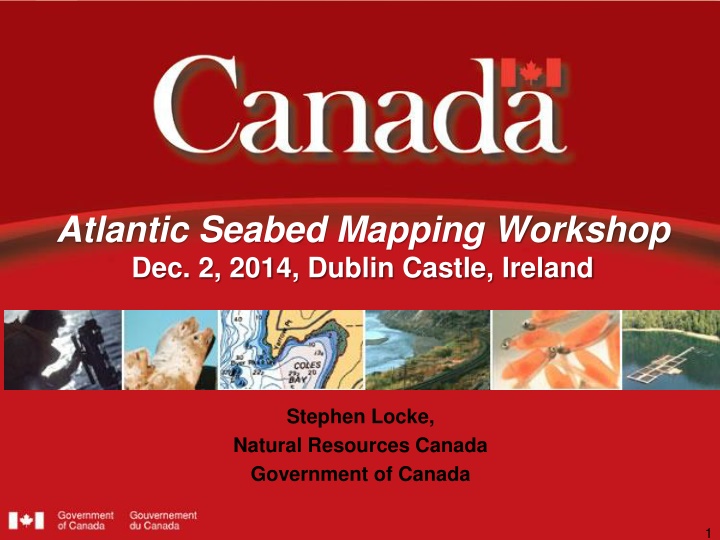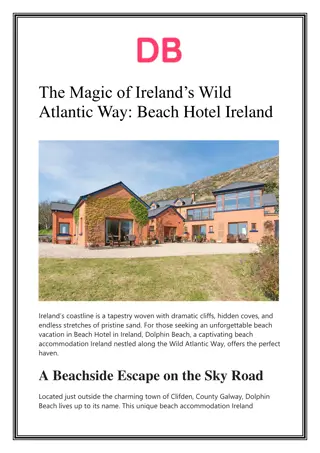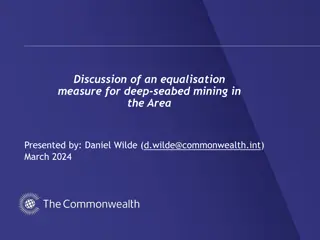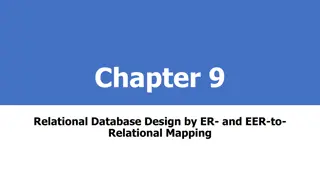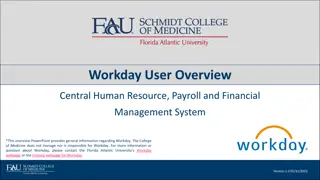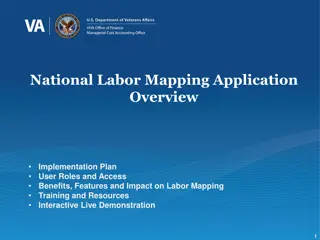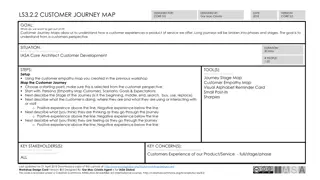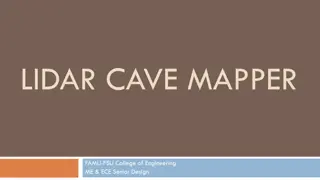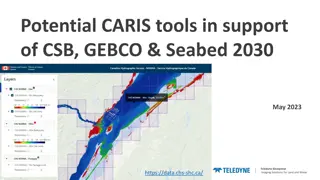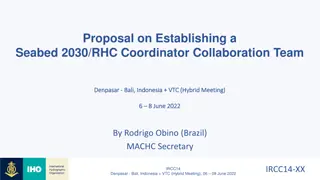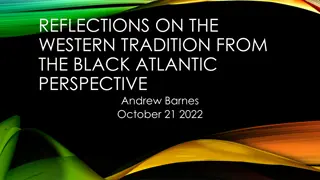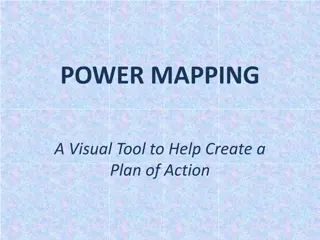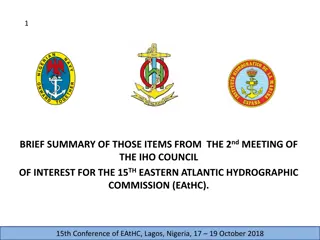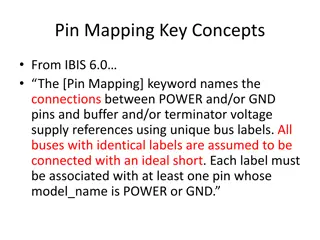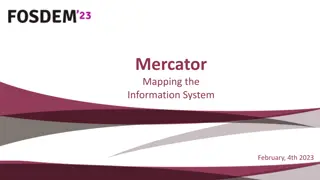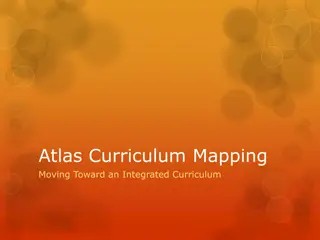Atlantic Seabed Mapping Workshop Summary
Workshop held in Dublin Castle on Dec 2, 2014, discussed current and future plans for seabed mapping in the Atlantic. Key topics included navigational charting, initiatives by various organizations, challenges of disjointed mapping efforts, and proposed actions to address issues. Recommendations included collaboration among stakeholders, development of a national strategic plan, centralization of data, and investment in technology. Stephen Locke from Natural Resources Canada highlighted the need for political support and funding to advance seabed mapping initiatives.
Download Presentation

Please find below an Image/Link to download the presentation.
The content on the website is provided AS IS for your information and personal use only. It may not be sold, licensed, or shared on other websites without obtaining consent from the author.If you encounter any issues during the download, it is possible that the publisher has removed the file from their server.
You are allowed to download the files provided on this website for personal or commercial use, subject to the condition that they are used lawfully. All files are the property of their respective owners.
The content on the website is provided AS IS for your information and personal use only. It may not be sold, licensed, or shared on other websites without obtaining consent from the author.
E N D
Presentation Transcript
Atlantic Seabed Mapping Workshop Dec. 2, 2014, Dublin Castle, Ireland Stephen Locke, Natural Resources Canada Government of Canada 1
Session 2: Atlantic Seabed Mapping: Current Status and Future Direction 2
Session 2: Atlantic Seabed Mapping: Current Status and Future Direction SLIDE 1 What are the current/planned key seabed mapping projects / initiatives? 1) Navigational Charting Canadian Hydrographic Services (CHS) - Scheduled, prioritized charting based on traffic and risk (mostly <50m) - World Class Tanker Safety program 20 ports, technology, MSDI, dynamics 2) Other Seabed mapping initiatives: - NRCan four-map series: bathymetry, backscatter, geology, benthic habitat - DFO Habitat mapping - Academic and Research networks, e.g. MUN, UQAR, ArcticNET - Provincial, e.g. Newfoundland & Labrador Seabed Atlas - Private Sector consulting/engineering, oil & gas industry - UNCLOS Arctic and Atlantic (bathymetry and siesmic) 3) An integrated approach Targeted Ocean Mapping Strategy (TOMS) proposed program towards developing a Canadian Ocean Mapping Strategy P.S. Canada is big! Three Oceans, Coastline 243,792km, Terrestrial Lands 9,093,507km2, Submerged Lands 8,841,511km2 Stephen Locke, Director GSC Atlantic, Natural Resources Canada, Canada 3
Session 2: Atlantic Seabed Mapping: Current Status and Future Direction SLIDE 2 What are the key /priority issues to be addressed ? 1) Seabed mapping disjointed and in Canada: federal, provincial, academic, private sector. Need to get our own house in order with understanding our submerged lands. Lack of national strategic plan or vision. 2) Need for data to be able to reside in one place, where? standards? portal? 3) Costs and Vessel Availability need political will and program funding to support seabed mapping initiatives. Stephen Locke, Director GSC Atlantic, Natural Resources Canada, Canada 4
Session 2: Atlantic Seabed Mapping: Current Status and Future Direction SLIDE 3 What are the necessary actions towards addressing priority issues identified ? 1) Canada to bring together seabed mapping expertise federal, provincial, academic, offshore boards, private sector THEN can work with international partners. Working Group of senior practisioners. 2) Work on Canada s Ocean Mapping Strategy (TOMS as a start) with a component of committing to Galway Agreement could have international pilot test, look at international best practices, standards, lessons learned 3) New technology AUV s for mapping, bathymetric LiDAR, satellite, new CCG vessels. Share information/innovations. Stephen Locke, Director GSC Atlantic, Natural Resources Canada, Canada 5
